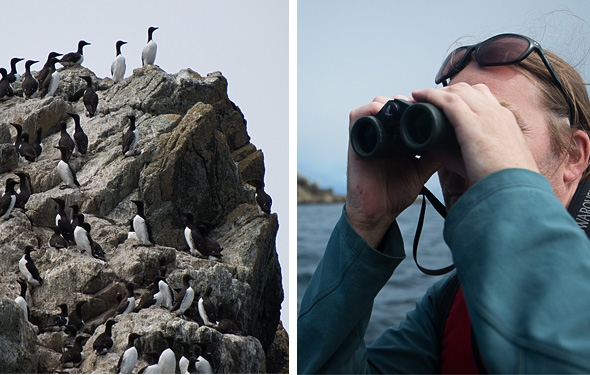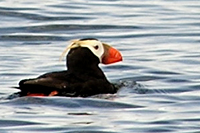
Bird Watching
Gwaii Haanas National Park Reserve, National Marine Conservation Area Reserve, and Haida Heritage Site
Birders’ paradise
About half of the 1.5 million seabirds that breed around Haida Gwaii are found in Gwaii Haanas.

You’re most likely to see puffins at the south end, but all along the east coast you’ll be sharing the water with feeding auklets and murrelets.
Concentrations of forage fish and plankton attract large mixed flocks of these true seabirds plus eagles, gulls and cormorants.
Watch the horizon for shearwaters flying north or south in incredible numbers, a long way from their breeding grounds in southern South America and New Zealand.
Later in the season, watch for less commonly seen long distance migrants such as albatrosses and jaegers.
On land, many of the year-round resident birds are unique subspecies. And fall is a great time for sightings of birds out of their normal range.
Seabird watching guidelines
To avoid disturbing seabirds during the breeding season, which runs from mid-April through September, you can take the following steps:

- Do not approach nests or go ashore on seabird colonies. Most offshore islands support seabird colonies. Be aware that many seabirds, as well as peregrine falcons, will abandon their nests, eggs or chicks if they are disturbed.
- Avoid using flashlights, campfires, and boat lights near colonies. Some birds come ashore only at night and may be disoriented by the lights.
- Avoid anchoring near seabird colonies since boat lights and rigging can be deadly to approaching birds.
- Avoid making noise near the colonies. This includes running boat engines, playing music or speaking loudly.
- Ensure your boat is rodent free.
Related links
- Date modified :